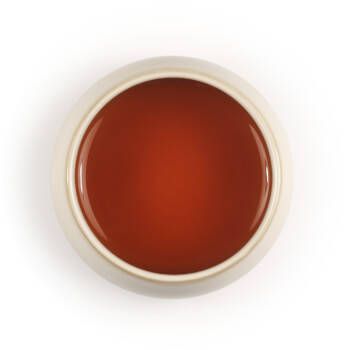92
gong ting puerh
Based on 89 reviews
sample
April 2025 harvest
$5
1.5oz
April 2025 harvest
$17
sample
May 2023 harvest
Origin
Yunnan, China
Farmer
Yang Qing
Elevation
1800m
Infusions
3

Known as “Palace Pu Erh,” Gong Ting is the highest grade of shou (ripe) Pu Erh, crafted from young golden buds grown high in Yunnan’s mountains. At elevations of 1,500–2,200 meters, the tea trees—Yunnan Kang No. 10 cultivar—develop rich complexity and depth.
Aged for two years, this Pu Erh unveils a deep, velvety liquor with layers of sweet earth, anise, and mineral warmth. Silky, smooth, and gently sweet, it’s a refined expression of Yunnan’s legendary tea craft — mellow yet profoundly satisfying.
Aged for two years, this Pu Erh unveils a deep, velvety liquor with layers of sweet earth, anise, and mineral warmth. Silky, smooth, and gently sweet, it’s a refined expression of Yunnan’s legendary tea craft — mellow yet profoundly satisfying.
This tea contains a high level of caffeine | Steep at 212° for 3 minutes.
Customer Reviews (89)
Fresh From Origin
With its roots in Yunnan Province, China, Pu Erh was originally made using large-leaf tea trees thousands of years ago. Named for the from which it was traded while on route to other countries, Pu Erh City. Pu Erh was typically compressed into bricks or cakes to allow for easier trading, aging and fermenting along the way.According to record, it was during the Tang dynasty (AD 618-907) when merchants began packing loose tea leaves into compressed bricks. These bricks of tea were easier to transport by pack animals than cumbersome loose leaf tea. Due to the length of distances and arduous terrain, it would be months or years before the tea would reach its destination. Throughout that journey, a rather extraordinary thing would occur. The tea would transform. Not only did the color of the tea change, but the flavor of the tea evolved to be richer, fruitier and smoother. We know now that the aging initiated a fermentation process whereby microbes acted on the tea, causing biological and enzymatic changes. The resulting tea, known to the Chinese as Pu-erh, became highly prized by royalty and the elite classes, then by tea connoisseurs; not only for its distinct taste but also for its reported medicinal qualities.
Free Sample Offer
If you buy this tea from another vendor, we invite you to try a free sample. Simply email a receipt showing an earlier purchase of the "gong ting puerh" tea to masters@adagio.com and we'll mail you a free sample of this tea to compare. We're convinced that you'll be impressed with its quality and value.Yang Qing

How long have you been growing tea and what got your started?
I have worked with tea for more than 35 years. I was born in a tea town, so I wanted to work in the tea area.
Can you describe a typical day out in the field?
Normally I work from 8 in the morning to 4pm in the afternoon. I pick up the tea leaves in the morning and do a little job in the factory in the afternoon.
What is your favorite part of growing tea?
I like plucking in the beautiful mountains. I like my hometown, there are lots of mountains. It is beautiful.
Conversely, what is the hardest part of your job?
I am getting old and my knees are not very good. So sometimes when I climb the mountains I feel uncomfortable. But I don't want to give up plucking.
Are there any tips you can give on how to best brew your tea?
I suggest using glass teapot or porcelain gaiwan. Do not brew too long. It is good to drink this tea after meals, which can reduce fat and is good for the stomach.

